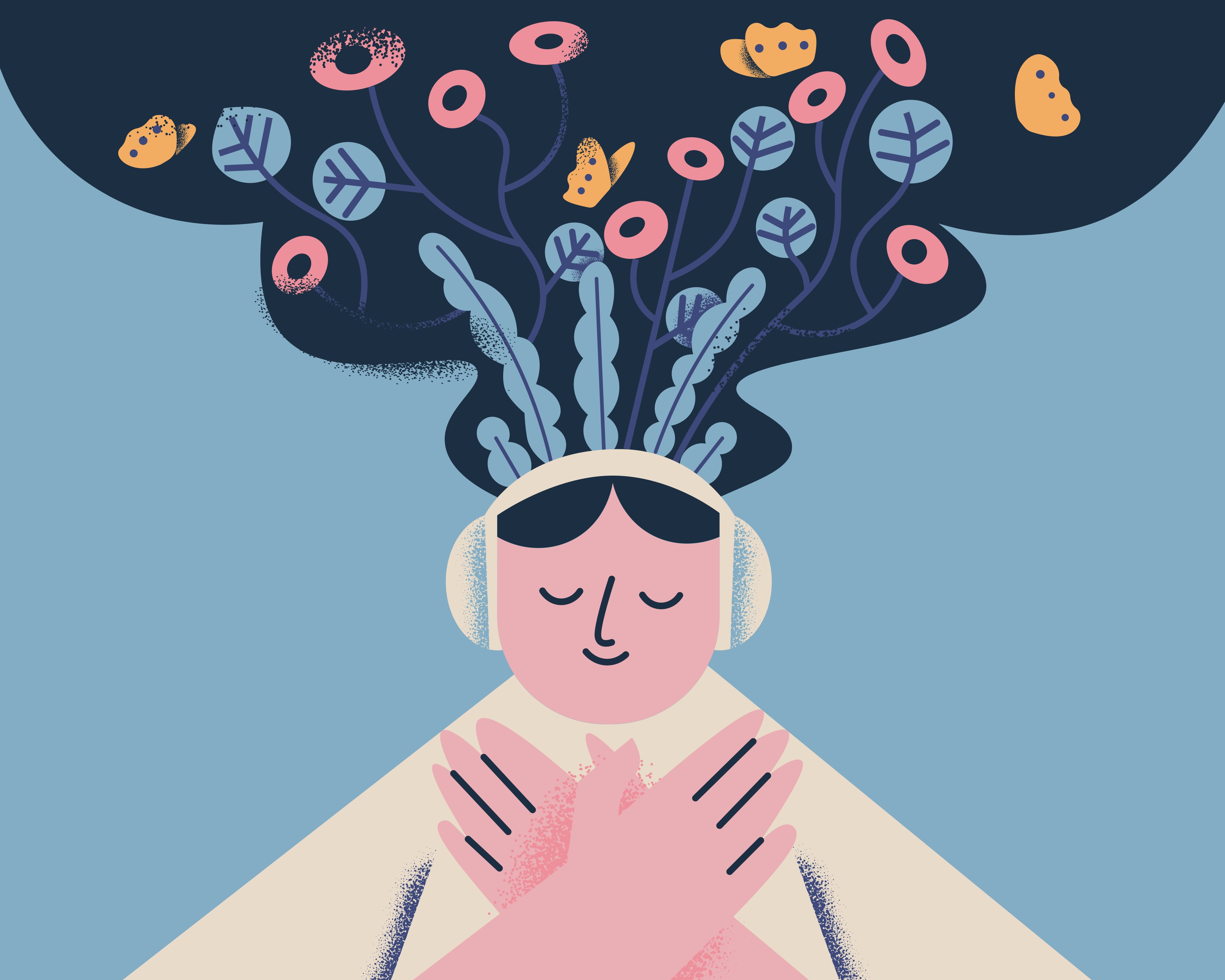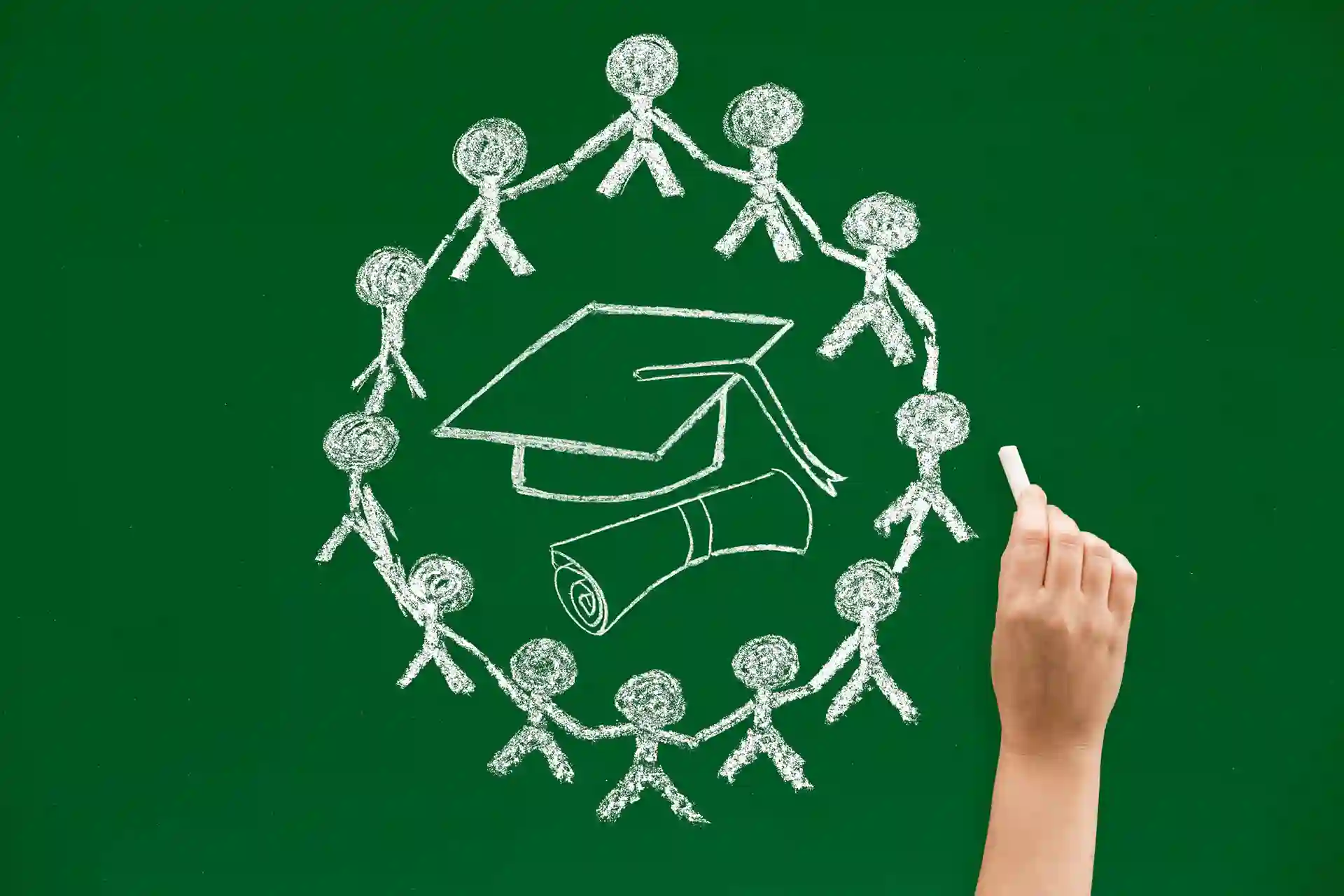This blog is the first in a 5-part series that YouthxYouth has collaborated on with SecondMuse's program, Headstream, to support uplifting the wisdom from Co-creators within Headstream’s Youth Collective program, the Co-Creator Club.
Have you ever been having fun hanging out with your friends, only to notice your mind wandering off? Or finished a meal on the run without really tasting it? Maybe you have a stressful test coming up, or remembered something embarrassing you recently said? Instead of reflecting on everything that could go wrong, we can choose mindfulness and presence.
In a world filled with distractions, deadlines, and digital overwhelm, being present often feels like a lost art for young people.
But what does it really mean to be present?
It could be….
Not stressing about schoolwork,
Being present when someone's speaking,
Being here, now
When we are truly present, we start to notice the warmth of the sun on our skin, the taste of our favorite snack, and the joy of everyday conversations. Our brains are less stressed so we enjoy the moment. By intentionally pausing, we can connect to our emotions, our purpose, and even the people around us.
Presence & Mindfulness
Presence and mindfulness go hand in hand. Presence is being fully here, paying attention to what is happening in the moment instead of replaying the past or jumping ahead to the future. Mindfulness is how we practice getting there. It is noticing our thoughts, feelings, and surroundings without judging them. Some schools and sports teams have already systematized these techniques and added mindfulness to their daily routines because it helps students focus and stay grounded. For example, at my high school, before the men’s soccer team's final playoff matches, the team practiced mindfulness and meditation together.
Actors use it to stay grounded on stage. Imagine if every school made space for mindfulness and presence every day. We would all be equipped to manage stress, focus better, and actually enjoy the moments we are in.
For example, imagine you are about to take a test. Your stomach is tight, your heart is racing, and your thoughts are all over the place. Instead of letting those feelings take over, you pause. You take a slow breath. You plant your feet on the floor and focus on the rise and fall of your breath for just a few seconds. Little by little, your body relaxes and your mind feels steady again. That is mindfulness. It is not about pushing stress away. It is about meeting the moment with calm and attention, and it is something anyone can practice.
My Favorite Mindfulness Practices
A lot of us are carrying more than just personal stress. We’re growing up in a world facing big challenges like climate change, racial and gender inequality, mental health struggles, and political unrest. Many systems and structures that once seemed stable are no longer working the way they should. Systems that were supposed to support us are falling apart, and the future can feel overwhelming. Mindfulness helps us face all of this with more clarity and strength. Mindfulness doesn’t mean ignoring what’s going on around us. It can help face it with more ease. When we slow down and connect to ourselves, we’re better able to process what we’re feeling and take care of ourselves.
Mindfulness reminds us that we don’t have to fix everything all at once, but it helps us show up for what matters with calmness and presence.
Schools could also incorporate these techniques into test weeks to reduce stress among students.
Breathing Exercises
One of my favorite ways to practice mindfulness is with a box breathing exercise. Research shows most people can only stay fully present for 4 to 8 seconds before their mind starts drifting to the past or future. In mindfulness, focusing on the breath for 4 to 6 seconds at a time is a common way to train attention.
Because our minds naturally jump from one thing to another, and with all the distractions in daily life, staying focused can feel impossible. That is why mindfulness is such a powerful tool for youth. For box breathing, inhale for 4 seconds, hold for 4, exhale for 4, and hold again for 4. Repeat a few times. This simple practice can calm your body, clear your mind, and bring you back to the present moment.
Mindful Eating
As youth we don’t always have time to sit down and eat properly whether it’s between classes, on the go, or while doing homework. Mindful eating is a way for us to slow down for just a minute and actually enjoy our food. Choose a snack you love, and instead of rushing through it, take a few seconds to notice its texture, taste, and smell. Pay attention to the first bite, how it feels in your mouth, and the flavors that show up. Even if you only have a couple of minutes, eating this way can help you feel more satisfied, give your brain a break, and make you more aware of how your body feels.
Gratitude
One of the most powerful aspects of journaling is writing down what we are grateful for. This simple habit trains our minds to notice the good, shifts our perspective to a more positive place, and can boost our mood.
We can pause at any time to think of three things we are grateful for right now. They might be big, like a person who supports us, or small, like our favorite song. Closing our eyes for just a few seconds and focusing on these things can calm our minds, lift our mood, and remind us of what is going well. The more we practice gratitude, the more naturally we notice the good in our daily lives.
Grounding & Nature
Engaging with grounding as a mindfulness practice where we reconnect with nature to help center us is also powerful. When we spend time outside, whether it’s walking barefoot on grass, feeling the wind on our skin, or being near water, we’re reconnecting with nature in a way that calms our mind and body, improving our well-being.
A simple exercise to practice grounding is to step outside for one minute. Feel the breeze on your skin, notice the sounds around you, look closely at something in nature, like a tree or cloud.
Writing & Journaling
Writing can be a powerful emotional outlet. When life feels overwhelming and it seems like no one can hear our voice, writing can become a form of self-expression and self-empowerment. Many people also find that it sparks creativity and helps transform confusion into clarity.
One way to use writing as a grounding practice is through journaling. Journaling offers a private space to express ourselves freely and explore our thoughts and feelings without worrying about what others might think.
Journaling is not just about writing tasks or making lists. It is about being present with our thoughts and tapping into the wisdom of our emotions.
A Reflection:
We have many tools to support our mental health, and presence and mindfulness are some of the most powerful choices. We can use them to ground ourselves, focus, and even transform the way we move through life. There is a strength we cultivate when we can connect to the moment, even when life feels chaotic. The more we practice, the easier it becomes.
As youth, we all have the power to pause, breathe, and return to the present moment. A quick breathing exercise, eating without rushing, noticing our surroundings, practicing gratitude, spending a few minutes outside, or writing in a journal can all make a difference.
It only takes a few seconds to reset, but those seconds can change the rest of your day. Choosing mindfulness and presence is choosing to take care of yourself.
Now imagine if every school taught this. If we started our days with deep breaths, a gratitude check-in, or a moment to notice our surroundings, we could all feel calmer, perform better, and enjoy school more. We can speak up and encourage our schools to make mindfulness and presence part of every student’s education. Together, we can create a space where taking care of ourselves is as important as any subject we study.
Discover how Headstream supports youth mental health through various initiatives. Visit www.headstreaminnovation.com.






Comments